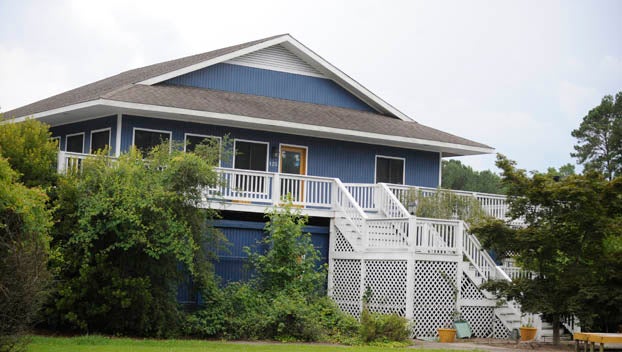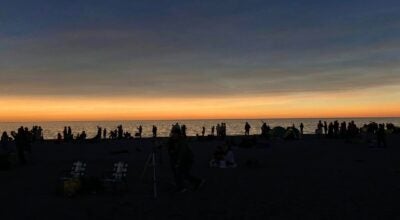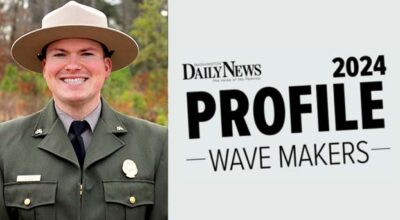Beaufort County Superior Court to review City Council’s Powell Place decision
Published 4:27 pm Thursday, July 15, 2021

- The former Racquet Club of Washington facility is located at 123 Avon Avenue in Washington. (Brandon Tester / Washington Daily news)
|
Getting your Trinity Audio player ready...
|
Beaufort County Superior Court has issued a writ of certiorari to review the Washington City Council’s decision not to approve the preliminary subdivision plat for Powell Place, a proposed 17-lot subdivision that Bill and Dale Peele want to build on their property that houses the defunct Racquet Club of Washington.
A writ of certiorari is an order from a higher court to a lower court — or board — to send in all documents on a case so the court can, in this case, review the board’s decision.
City Attorney Franz Holscher confirmed Wednesday that the city had received the writ and would respond accordingly. He had no further comment on the litigation. The writ was issued July 30; the city has 30 days from that point to submit its record of the proceedings concerning the appeal filed by the Peeles.
The petition for a writ of certiorari was submitted by Powell Properties East LLC, Marben LLC, Dale Peele and William “Bill” Peele.
The property is located near the corner of Avon Avenue and Atkins Drive. City Council has denied the Powell Place preliminary plat twice this year. Both times, the cityplanning board recommended that City Council approve the plat.
In April, City Council reviewed the first preliminary plat for Powell Place, which at that time was planned as an 18-lot subdivision. Bill Peele said prior drafts of the plat had included as many as 22 lots, but it had since been trimmed down to 18. He said anything lower than that would diminish the project’s economic feasibility.
Mayor Donald Sadler and his wife, Alice Mills Sadler, live in a neighborhood adjacent to the Peeles’ property. Donald Sadler has recused himself from all agenda items related to the Powell Place proposal.
Several people came forward during that April meeting and asked City Council to deny the plat. Their concerns centered primarily around the density of the proposed neighborhood, the subdivision’s compliance with city ordinances and a potential increase in traffic stemming from the new development.
Councilwoman Betsy Kane was concerned at that time about two lots branching out from a cul-de-sac on the proposed plat. Given how the proposed lots were divided and how far the branched out from the rest of the property, one of them would only be accessible by way of Camelia Drive in the Macswoods Subdivision. Kane was concerned about the fact that Camelia Drive wouldn’t fit the city’s current subdivision ordinances.
Councilwoman Virginia Finnerty eventually made a motion to approve the plat on the condition that the two lots in question would be combined so that both could be accessed from within the proposed subdivision. That motion failed with a 2-3 vote.
One month later, Bill Peele again appeared before City Council and told them that an attorney, who wasn’t at that meeting, now represented the property owners. Two versions of a petition against the proposed subdivision — one that was presented to the planning board in February 2021, and another that was presented to City Council in April. Both of the Sadlers had signed the first version. Donald Sadler’s name was whited out on the second version. Both versions were included in the petition for a writ of certiorari. Peele asked for further guidance from City Council; heeding Holscher’s advice, they didn’t respond.
At another City Council meeting in June, the property owners brought a revised version of the proposed plat to City Council. Bill Peele said a lawsuit had been filed against the city following the first denial in April, but the Peeles chose to drop that lawsuit and move forward with the planning process “in good faith.”
The revised plat included 17 lots. As requested by the planning board, a second entrance and exit had been added along Avon Avenue, which added to concerns about the property not being in alignment with some subdivision standards — one being that the length between any two intersections shouldn’t be any less than 300 feet. But City Council learned that, in city staff’s opinion, the proposed plat met “the purpose and intent of the ordinance.”
The revised plat again received some negative feedback from some of the property’s neighbors. Alice Phillips, who publicly advocated against the proposed development during that meeting, outlined some of the concerns neighbors had in a letter to the editor.
In that letter, Phillips rejected Bill Peele’s claim that the neighbors were swayed by the Sadlers’ desires. The list of concerns Phillips mentions includes overcrowding, “blatant non-compliance” with the aforementioned intersection ordinance, and concerns about the safety of residents inside and outside of the proposed property.
With Sadler having recused himself and Kane absent from the meeting, Finnerty motioned to approved the revised plat but didn’t receive a second, much to her frustration. Council then approved Mike Renn’s motion to deny the plat due to “noncompliance with the applicable specific standards of the city subdivision ordinance, including but not limited to those highlighted by city staff; inconsistency with general standards … contained in the city’s subdivision ordinance, including but not limited to public safety, traffic density and welfare issues; or the detrimental impact this subdivision would have on surrounding landowners, the nearby community and the character of existing developments in the nearby area.”
In the petition for a writ of certiorari, a copy of which was obtained by the Daily News, the petitioners ask the court to overturn City Council’s decision. They’ve asked the court to decide whether the “petitioners were granted their due process rights, that this decision was based upon, competent, material, and substantial evidence in the whole record, was impartial in nature, and that the decision was not arbitrary and capricious.”





